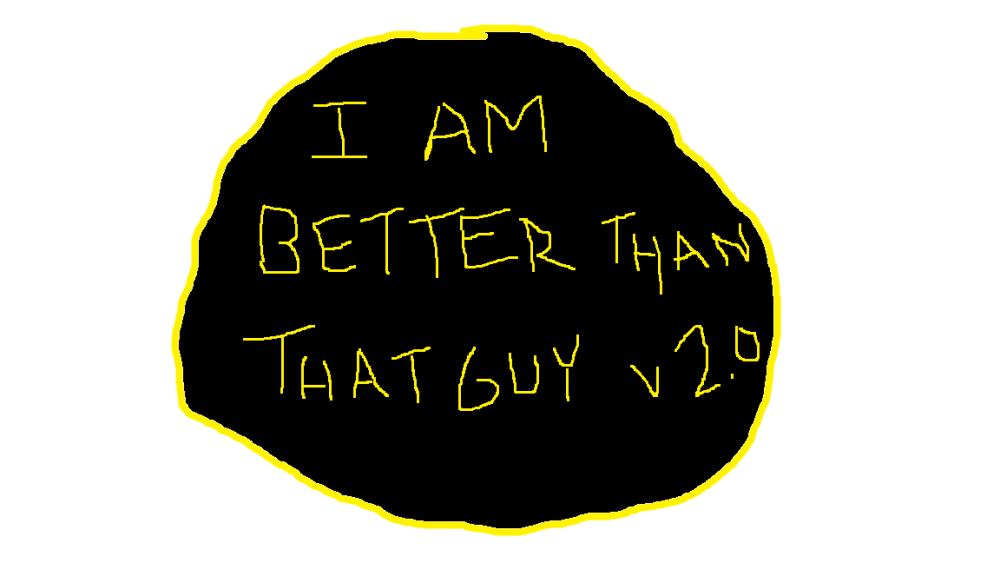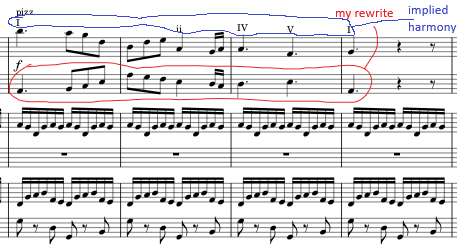Leaderboard
Popular Content
Showing content with the highest reputation on 01/11/2024 in all areas
-
Not an original composition, but a transcription. I recently came across a rare piano piece by H.W. Ernst that I decided to transcribe for violin and piano. I figure if the composer is H.W. Ernst, it deserves to be heard on the violin.2 points
-
This is intended to be the second part of the second movement of my String Sextet in G flat major, after the part of Lamentoso. These two parts are very different from the more fleeing and transcendental first movement as I hope they capture the sadness of the time and what I feel, before leaping back to the world of the pentatonics later, which would make the pentatonics more grounded. Here is the first movement of the piece: Here are the scores, the original version and a version with my own (painful) analysis on it: Final Fugue from String Sextet movement 2.pdf(With Analysis) Final Fugue from String Sextet movement 2.pdf And here is the youtube video: The piece is dedicated to Mr. Johnson Ho. The finishing of the fugue is prompted by hearing his worsening health, so I really want him to stay healthy. The inspiration of the fugue first comes from my friend Mike @chopin and my mentor David (I am very honoured to name him my mentor even though we have never met in real life since his videos form the skeleton of my composing skill. Go watch his analysis videos NOW!) said that the middle fugato section from the first movement is the best part of the movement. I was shocked since I believed it was the worst of the movement! Then my bro Vince @Thatguy v2.0 (who also makes this perfect audio) inspired me to write a dense fugue for the second movement, and so I challenged myself to write a six part fugue, since I feel like it’s not fully realised in the first movement. This is he most difficult I have ever written, but finishing it I now consider it my most beautiful work composed up to date. It’s so emotionally deep, even weirdly I feel zero emotion during the composition process, only calculating the counterpoint haha. I am so satisfied with the result. The fugue comprises of three subjects, all from the 1st movement. The 1st and 2nd subjects are from the 1st movement fugue’s subject, while the 3rd subject is derived from the opening theme of the Sextet’s first movement. Here is the plan of the movement (time according to youtube video): First part (00:03): First subject enters in each instruments, inversion introduced at . All of sudden C minor enters (01:55) and I quote my subject of the C minor Clarinet Quintet 3rd movement fugue here to intensify the sadness. Also kind of replying to the relationship of G flat major and C major in the first movement, but while freedom is shared there, now sadness is shared. Second Part (02:12): Second subject enters and the section features a saturation of stretti. The C minor section (03:56) comes in at and it’s my favourite section of the whole fugue. It’s insanely tragically beautiful here. Third Part: Third subject enters (04:58), first and second subjects combine in the manner of the 1st movement fugato. The intensity is kind of lowered after that insanely tragic C minor section, maybe kind of accepting and reflecting upon it, and it’s less saturated with the subjects. However things starting to get intensified, first the third subject is treated as in Bach’s Chorale Preludes when it is cut up and divided to four phrases alongside the other two subjects (06:29). The only pentatonic entry (07:16) arrives to kind of relate itself to the first movement and hints what will come at the end, but at the meantime it’s defeated by disappointment and the fugue ends in a doubtful manner, which will lead to the chant section. Hopefully I would finish the whole movement as soon as possible! Hope you enjoy the fugue now! Henry1 point
-
Hello! Today I come to the forum with something a bit different than my usual, more large scale entries. A solo piano piece. Somber, certainly not cheery. With a sense of longing. This was made in FL Studio with the (FREE) Spitfire Audio LABS Glass Piano. I have recently been wanting to compose a short piece for piano only...so today I sat down and worked and this is what came out of that session. I didn't pre-plan the piece and as a matter of fact, was not even at home when I made it to use my keyboard to sort things out. This piece just progressed sort of naturally. Making pieces like this aren't something I do often so I would love some feedback on it! Thanks for the listen and hope you enjoy it! As always, if this piece brings to mind any imagery for you I would love to know what you see when you hear it. I'm a very visual listener, so it's always very cool to hear what other people imagine when listening.1 point
-
Any feedback is welcome! Hopefully the parts for the Marimba and the Harp are playable; I still have to check how pedals work in Harp, but for now I want to know what this sounds like to everyone and if this is enjoyable!Quintet_1.pdf1 point
-
This is the solo version of my Revolution Piece. Initially (abt a yr ago) composed it for solo piano but as if for a duet in terms of playability ( which sounds more complete and needed ), so I've instead decided to delete that and make both versions - a dumbed-down one more-or-less playable for solo piano, and another for duet ( haven't finished )... and perhaps another for orchestra as some hv suggested ( haven't started ). Score: https://musescore.com/user/62605720/scores/11404237 ( Idk why I can't convert to pdf for these 2 weeks and counting ) Five main parts (personally) : Allegro: 0.05 - 2.55 Slow part which gradually gains momentum: 2.56-8.55 Transition: 8.56-10.42 Allegro and climax: 10.43 -13.50 Ending: 13.50 - 17.36 Revolution was more or less wht I considered when I composed first theme, and so it went. Shld hv included pedals for the first note of m 84-91 and 413-420 and/or change them to crotchets, but I guess its safe that its understood right? Any feedbacks greatly appreciated!1 point
-
Hello @Aria Donn, I really love this transcription! I listen to the original work in @SisselOnline’s channel and I love both the original and your transcription. You successfully transcribe the original piano writing to a very idiomatic violin writing, aided by your skilfully written string writing and knowledge, for example the slurs and the double and triple stopping which I admire! The violin brings out the beauty of the melody! I think I can think of it’s maybe to add another line for the left hand since it’s mostly a static note, since the original left hand is put to the right hand and the right hand put to the violin. Also your playing is great and very expressive! I enjoy it every much! Thx for sharing! Henry1 point
-
It's less so the speed and more the technique at that speed. A harp can play arpeggios and glissandi very very fast because they can glide across or alternate hands, but you have two notes at a time that are close together and fairly fast on the same staff. Pluck like that in the air and feel how awkward that is. The best solution I think would be either to increase the note duration or make it one note at a time, but maybe you can figure something clever out. Also, that is a great piece to study. Saint-Saen's harp writing is top notch stuff. Yes, that would work. To get an understanding as to why that's too fast, grab your guitar and play that part at speed with only one finger plucking on only one string. Anyway, I'm glad my feedback has been of some use 🙂1 point
-
I see you have retained @ComposaBoi's propensity to use both the #4 and ♮4 at the same time in this fugue (from his Christmas piece)! I think it is an effective dissonance in this context as well! And at measure ~54 you modulate to C minor and quickly manage quite a smooth transition back to F# minor - very well executed. I think the piece to me lacks some changes in texture and rhythm to create contrast. The piece proceeds too consistently with quarters and 8th notes without a change. I would have loved to hear some kind of toccata section at a faster tempo (although you do have the slower meno mosso section near the end). Or maybe using more 16th notes or triplets or something to create more rhythmic variety at some point. One of my favorite fugues by Bach - the "Wedge" fugue in E minor is really great at this as its more of a fugue-fantasia where Bach intersperses subject entries with toccata-like runs that mesh perfectly with the fugue subject. It's really more of a composite form which is why I love it so much. Combining two seemingly incompatible musical ideas really worked well in that context. If you had included some kind of much different contrasting musical idea it would have freshened up the rhythm and texture and created a much needed contrast imo. Thanks for sharing and a great achievement nonetheless! I mean it is a 6-voice fugue after all!1 point
-
At 0:34 it sounded like you were about to quote an old piece of yours I forgot the name of. I think pretty much everything that comes before that point is introductory and just setting the scene for the entrance of the main expository material. It's kind of a haze of diffuse musical ideas that serves as a soft blanket of sound that makes the entrance of the melody more dramatic through its restraint. And as the main melody progresses after 0:34 it gradually becomes more and more diffuse dissolving at the end (if only you let the last chord resonate instead cutting it off!). Thanks for sharing this. It seems that even though you use the whole orchestra you effectively score it at a reduced dynamic level throughout keeping the forces in reserve, restraint. Great job!1 point
-
1 point
-
The polls are closed, and the voting has been finalized! (rigged) Congratulations to @PeterthePapercomPoser, for not only winning the challenge, but also in completing such a festive work! Here is a badge for your efforts. A unique, custom, one of a kind piece of digital jewelry, better than all the ones on this site.1 point
-
The textures are very satisfying and the music flows well with clear direction. Some of the harp writing looks like it was written for piano, which most of it would not be unreasonable for a harpist, but measure 23 seems like it might be too much for plucking. Make sure you understand how the instruments are played when writing for them. Another similar issue occurs on measure 27 in the violin. That's much too fast for pizzicato! Remember also to provide dynamics when the instruments first play. You did so with the piano and strings, but the harp was only a measure late and the poor marimba only gets dynamics at the very end. The section from bars 9-12 feels awkward to me, and upon closer inspection, it looks like you don't quite know how that's harmonised, so the viola kind of ends up sounding off. I've written the implied harmony I hear and how I would write the viola part (also, I changed the key signature to be more accurate with the tonal center, used quavers instead of semiquavers in the left-hand piano just because I think it looks nicer, and shortened the last notes' duration of the strings to fit with standard pizz writing i.e. no minims or longer for high strings) As you can see, I continued the established contrary motion and reinforced the harmony. The rest of the piece was harmonically coherent. I hope this helps!1 point


.thumb.png.8b5b433a341551e913a34392660bc95b.png)






